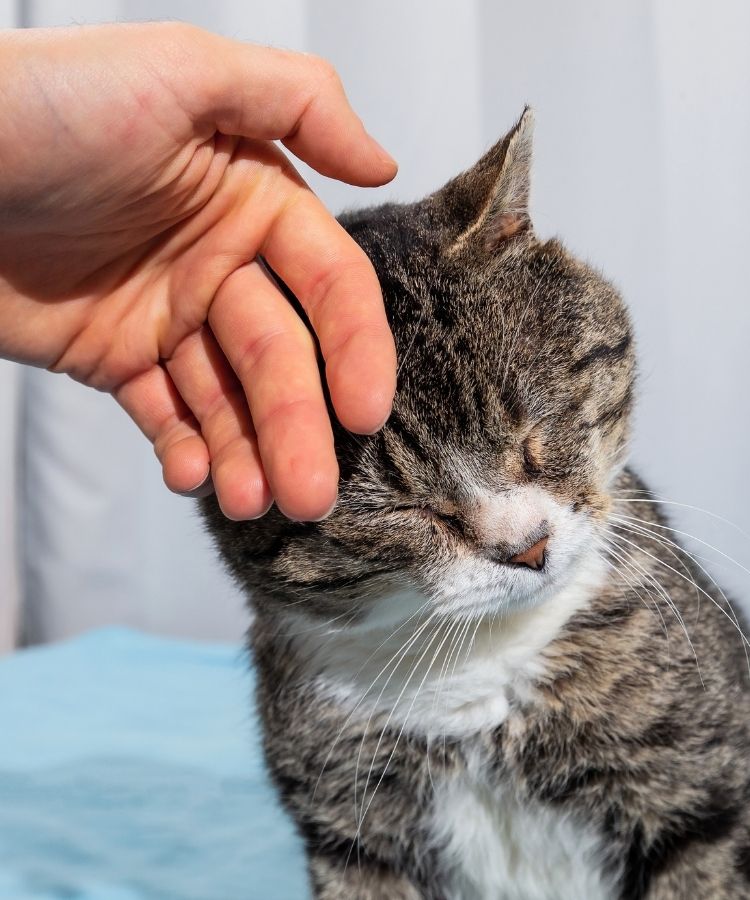Quality of Life Guide

Guide to Evaluating Quality of Life
We all wish there was a flow chart, a tick box or check list, or a nice way to tally up our perceptions of a pet’s quality of life “score” to arrive at an answer. Pain scales and quality of life questionnaires do exist, and we use them regularly to help better define our focus and understanding of how a pet is feeling and what a family is struggling to manage. But they are limited, and are best used as screening tools, tracking symptoms, or education to better understand what we want to look for.
Our Favorite Quality of Life Scales and Pain Scales

Pet Hospice BEAP scale for Chronic Pain
This scale is our favorite, because it uses your pet’s body language, behavior, appetite, and breathing to help families detect signs of chronic pain. There are many useful pain scales for acute pain, but chronic pain is more difficult to detect, because the pet learns to live with it and adjusts to it, and can seem MOSTLY normal. Unless you know what to watch for.
Helsinki Chronic Pain Scale for Dogs
This scale uses a series of questions to help define changes in behavior and mobility often due to chronic pain (like arthritis pain) in dogs. It is validated and repeatable, and very useful in tracking changes or monitoring for improvement after starting a new medication or therapy.
End of Life Values and Goals Worksheet
This worksheet helps families define “lines in the sands” and answer hard questions about what they wish for their pet’s end of life experience. Often, with chronic diseases, we can grow accustomed to gradual changes and don’t recognize the impact they are having on our pet’s quality of life, or the impact they have on our relationship with the pet, and our ability to provide good care and support.
Ohio State University - How Do I Know When It's Time?
This is an in depth look at how we approach end of life decisions for our pets. It discusses considerations for treatment decisions and euthanasia, including quality of life. A chart that many families find useful in scoring a pet’s quality of life is found on page 6.
Client Specific Outcome Measures
This simple but effective tool was developed by The Canine Arthritis Resources and Education (https://caninearthritis.org/). It allows pet parents to identify specific behaviors affected by their disease to monitor and track over time. It is most useful at evaluating how a treatment is improving (or diminishing) quality of life, and is easily tailored to an individual pet’s disease and personality.
Known and Unknown Variables and Complex Decisions
We recommend that our families have a good understanding of their pet’s diagnosis. This means understanding how it affects their daily life, how we expect it to progress, and what treatment and management options are available. Having a conversation with your veterinarian or one of our hospice veterinarians to gain a better understanding of what is happening to your pet physically, emotionally, and mentally can help guide our decisions for them. Ultimately though, there will be things we can not know.
Factors Involved in Making End of Life Decisions
From Four Box Method originally developed by Albert Jonsen, Mark Siegler, and William Winslade
Clinical Considerations
These are all the considerations around the diagnosis, disease process/progression, treatment options, side effects. It includes things like:
- How long will they likely live?
- How will the disease progress and how quickly do we expect it to progress?
- What other disease processes is the pet also dealing with and how will this affect disease progression and treatment options?
- What are the different options for treatment?
- How much does it cost to manage or treat?
- Will they improve or will this be a chronic treatment?
- How invasive are treatments and diagnostics?
- How will this affect the pet emotionally and physically?
- Do they mind being medicated or having their blood drawn or travelling in the car?
- How often will the pet need to go to the hospital for treatments or diagnostics?
- What are the expected and less common but potential side effects of treatments and diagnostics?
- Will the treatments/diagnostics be performed in the home? Can they be done locally or do they need to travel extensively?
- What kind of information do we hope to gain from a diagnostic and how will this change our treatment plan?
Quality of Life
These are all the factors we look at to evaluate the pet’s quality of life, how it is and will be affected by their disease, including their relationship to the family and other pets, their ability to engage with their environment and world, and their ability to find joy and peace. It is often broken down into negative effects of their illness or disease but also includes the positive aspects of care (like spending more time with the family because of an increased awareness of limited time left).
- Pain
- Anxiety/fear
- Frustration/boredom
- Loneliness/isolation
- Ability to enjoy and engage
- Nausea or hunger/thirst
- Breathlessness or air hunger
With all of these aspects, how do we expect them to progress, what can we do to manage and control them, and what treatment options will minimize the negative aspects? How prepared are we for managing these if they suddenly become severe, as in a crisis?
Contextual Features
These considerations are sometimes more difficult for families to be honest and open about, because these are the factors surrounding the primary caregiver’s (the human family) needs and values. They include considerations such as:
- What are our financial concerns and limitations for care?
- What are our physical limitations?
- Are we physically capable of lifting/carrying a large dog up and down stairs?
- Can we function with interrupted sleep for many nights in a row?
- Can we give injections or oral medications?
- Can we be at home frequently or do we have to be away from home for 8-10 hours per day?
- Do we have time to devote to caring for our pet?
- Are there family members like small children in the home who can not understand our pet’s changing needs?
- Are we immunosuppressed or pregnant and need to avoid exposure to certain medications like chemotherapy?
- How much does the family understand about the disease and treatment options? Do they have experience with death and dying, or nursing care, or veterinary care? Do they have medical knowledge?
- How much time do we have to devote to caregiving every day? Do we enjoy caregiving or do we resent having to provide extensive care and cleaning for them?
- What is the family’s relationship with the pet? Does the pet’s life have a broader context or meaning?
- What religious, spiritual, or ethical beliefs does the family have around end of life care and death?
- What fears and hopes does the family have around the death and dying experience?
- What are the family’s most important goals surrounding the end of life experience?
These questions are sometimes deeply personal and complex, but also some of the most important considerations when making end of life decisions. It is vital to have a veterinarian or professional you trust to understand your needs and limitations, hopes and fears, and beliefs, when discussing end of life decisions.
Patient Preferences
Our pets have unique personalities and relationships, just like we do. What will work for one animal, may be impossible for another.
- What do they enjoy? What did they enjoy before their illness and what can they still enjoy?
- Do they like car rides? Do they like new people and visiting the veterinary hospital?
- Do they like being touched and handled? Brushed, bathed, cleaned?
- How do they tolerate medications and injections?
- How do we know when they don’t like something? What signs will we look to tell us that they do not want a treatment or type of care?
- Can we make modifications to make treatments or care more acceptable and enjoyable?

